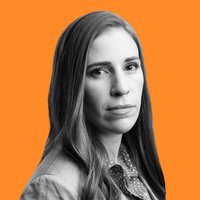Janice Chen was jumping into an Uber, cramming in equipment the size of a microwave. At the time a PhD student at the University of California, Berkeley, Chen had been invited to a lab to look for the human papillomavirus in hospital medical samples using a new technique she had created.
Soon enough, bingo. Her test, which uses the gene-editing tool CRISPR, was able to spot the virus nearly every time, offering a new way to test for germs. She and several other students, along with Jennifer Doudna, the co-discoverer of CRISPR, cofounded a company with plans to develop a new generation of testing instruments. They called it Mammoth Biosciences.
The diagnostics business isn’t easy to break into: a few companies with well-established technologies dominate. Chen is now in charge of a team of 40 as the chief technology officer of Mammoth. She says she leans on her experience playing chess competitively as a teenager, when she learned how to build a position move by move, make meaningful sacrifices, and get inside competitors’ minds.
Chen grew up in Salt Lake City. Her parents were immigrants from China. Her brother is a world champion and Olympic medalist in figure skating. When she was growing up, she says, her parents urged her and her siblings to “find your passion and do your best to move it forward in a significant way.”
Chen crammed for years studying chess moves but ended up finding her real interest while moonlighting at her father’s biotech supply company. That’s where she first copied genes and engineered a bacterium.
Then, at Johns Hopkins University, she had a chance to help out on a large ongoing project to assemble the entire genome of a yeast cell from DNA parts. As an undergraduate, she did menial lab tasks. Still, here was life being engineered from the ground up. And she was part of it.
For her PhD, Chen landed a spot in Doudna’s Berkeley lab, where CRISPR editing had been co-developed in 2012.
Chen joined a fast-paced hunt to discover and understand even more types of DNA editors and harness them for new uses. She demonstrated a way that a particular gene-editing enzyme could be used as a diagnostic test. Her test could find a specific sequence of viral DNA in a sample, cut it, and unleash a fluorescent signal that would report the result.
That looked useful enough for infectious-disease testing to try to commercialize it, which is what led her to cofound Mammoth in 2017.
Then came covid-19. When the rollout of the standard tests stumbled in the spring of 2020, the US Food and Drug Administration gave Mammoth and dozens of other smaller companies an emergency green light to sell their tests for the virus. It was a crisis, and that meant the purse strings were loosened too. Mammoth has won $30 million in government funding since the pandemic began.
As of May 2021, Mammoth was preparing to commercialize the company’s first product, kits that public health labs can use to run 1,500 simultaneous covid-19 tests with less human intervention than existing ones require.




